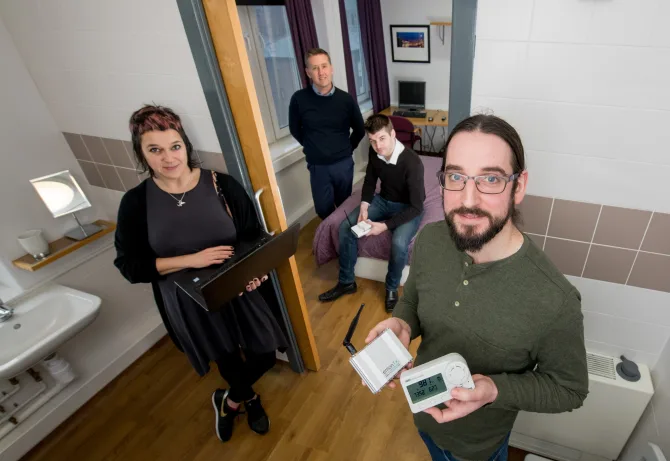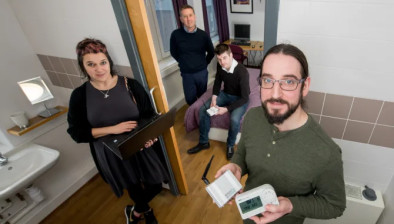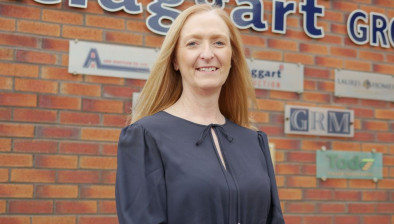UK: Smart home sensors could make mould a thing of the past
Researchers at Northumbria University have come up with a solution for mould, mildew and damp which cost housing associations, landlords and homeowners millions of pounds a year in repairs.
Over the last year, Northumbria academics, along with partners from BIM Academy and the National Energy Foundation, have been working with local housing organisation Your Homes Newcastle to find out more about how its customers live in their homes.

(from left) Dr Kay Rogage (Northumbria University), Mark Riley (Your Homes Newcastle), Graham Coulby (BIM Academy) and Dr Adrian Clear (Northumbria University) with the smart sensors
With permission from customers, sensors were placed in seven apartments, monitoring factors such as electricity usage, room temperature, humidity, light and how householders move around the rooms within the building.
This can be used to understand how customers use buildings, provide alerts and advice which will help them live more comfortably, and influence the design of buildings to better reflect customers’ requirements.
The findings of the Smart Connected Buildings project will be presented this month at the annual BIM Show Live conference by Dr Kay Rogage, research fellow in digital living at Northumbria and an active member of the University’s BIM Academy Research Team.
Dr Rogage said: “One of the benefits of this system is that it can be customised, so for example an alert could be set up so that when the humidity in an individual flat or room goes above a certain level the building owner or occupant would be notified.
“The data would also be displayed on an online dashboard, showing humidity levels over a few days or weeks, so patterns and potential issues could be identified.
“For the landlord this would mean the conditions which lead to mould and mildew could be identified early on, before they develop, minimising the costs incurred by treating the problem, significantly reducing the number of complaints and providing more comfortable living conditions for tenants.”
The project has been funded by Innovate UK, with the aim of integrating building design information, sensor data and feedback from building users to produce meaningful alerts and advice to builders and owners.
The team involved now hope to source additional funding to develop the prototype into a commercial grade software which could be used by housing associations, property owners, developers and others working within the housing and building sector.
The prototype would include additional features, such as the ability to extract data from Standard Assessment Procedure (SAP) reports - used by the Government to assess and compare the energy and environmental performance of homes.
The reports contain useful information such as the estimated energy consumption of a building and these values could be included into the current alert system to automatically trigger an alert if the estimates are exceeded.
BIM Academy director Graham Kelly said: “Building Information Modelling has been successfully used in the design and construction of buildings for some time, but buildings’ owners and occupants still don’t have any way of measuring how their building is performing once it is complete.
“Buildings can create huge amounts of data once they are in use and the Smart Connected Buildings project aims to collect this and use it to generate advice on how to optimise the performance of a building once complete and inform future design and construction.”
Ian Gallagher, assistant director operational property services at Your Homes Newcastle, added: “As the managing agent for Newcastle City Council’s housing stock, we want to provide homes where people are warm and comfortable, are able to control the environment they live in, and can rely on us to proactively avoid problems which can cause them upset and concern, such as mould, damp and condensation.
“We recognise that sensors and data can help us achieve this, so we were very happy to work with Kay and her colleagues to develop the Smart Connected Buildings model. We look forward to seeing where this can go, how customers can benefit and how we can assist in developing it further.”
Dr Rogage will be discussing the Smart Connected Buildings project at the BIM Show Live on February 27 – for more information about the event, and for a full schedule of speakers, click here.








